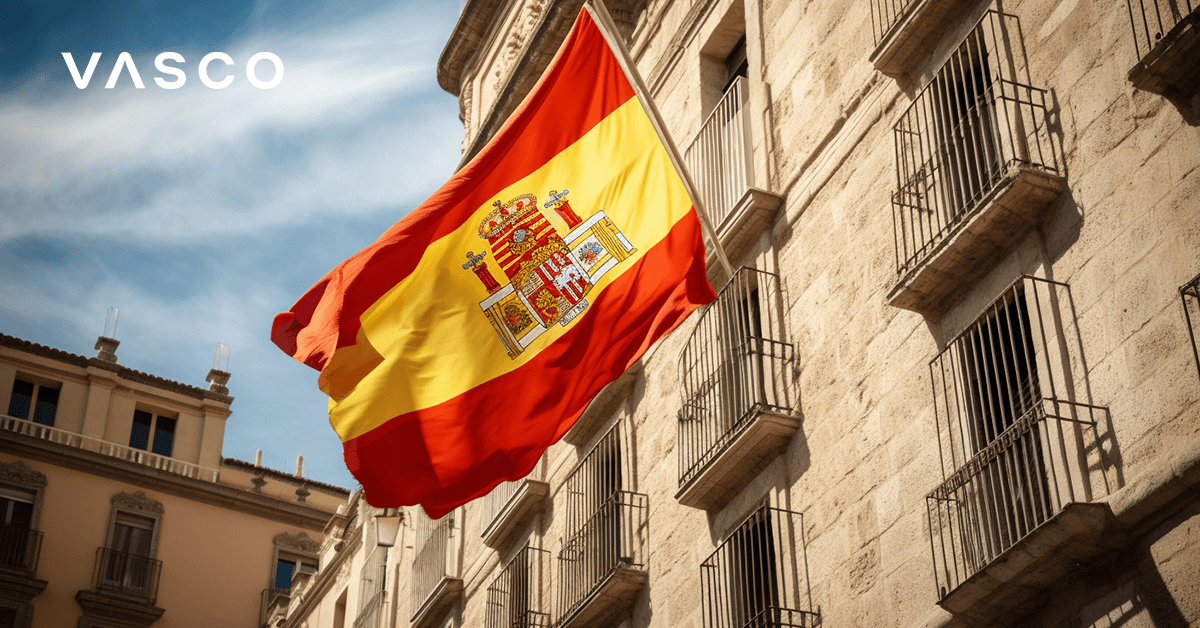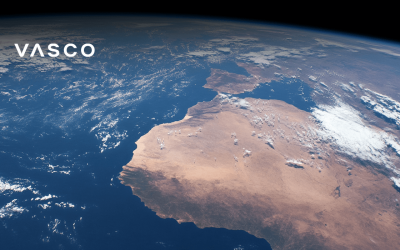Language is a remarkable aspect of human culture, carrying within its syllables identities of diverse societies.
Spanish, with its melodic cadence and rich history, holds a prominent place among the world’s most spoken languages.
As it spreads its linguistic roots across continents, it becomes increasingly important to understand the countries where Spanish is the official language or where Spanish has a strong presence.
So, in this blog post, we’ll embark on a captivating journey through the list of countries that speak Spanish as their official language.
From the majestic landscapes of Latin America to the vibrant cities of Europe and beyond, we delve into the countries where Spanish is the official language, unveiling their linguistic tapestry.
So, if you’ve ever wondered which countries speak Spanish as an official language or are simply curious about the widespread influence of this global tongue, this is the perfect opportunity to satiate your curiosity.
- Which countries speak Spanish as an official language?
- Where are most of the nations where Spanish is the official national language?
- How many countries are there in the world that have Spanish as the official language?
- Which European countries speak Spanish?
- Which countries in South America speak Spanish?
- Which African countries speak Spanish?
- What are the largest Spanish-speaking countries in the world?
- What are Spanish-speaking Latin American countries?
- Is Spanish the most spoken language in the world?
That’s a lot questions to answer!
But first, let’s find out how many countries speak Spanish.
FAQ:
Does Spain have an official language?
Is Spanish the official language of 20 countries?
What are the five official languages of Spain?
Which country no longer uses Spanish as their official language?
How many countries officially speak Spanish?
Who spoke Spanish first?
What is the only country in Central America that doesn’t speak Spanish?
How old is Spanish as a language?
What country speaks the fastest Spanish?
Which countries speak Spanish as an official language?
There are many countries that speak Spanish.
But, how many people speak Spanish globally?
From Europe to America, Africa and even Asia, there are nearly 500 million Spanish speakers in the world.
When considering the list of countries that speak Spanish, one can embark on a linguistic journey that spans continents and embraces cultural diversity.
Which European countries speak Spanish?
Spain itself, as the birthplace of the language, stands tall as a country where Spanish reigns supreme.
And it is the only country in Europe where this beautiful tongue is spoken as an official language.
So, where are most of the nations where Spanish is the official national language?

Which countries in South America speak Spanish?
When it comes to South America, Spanish has a way stronger presence there than in any other territory in the world.
Below is the list of countries that speak Spanish as the official language there:
- Colombia,
- Argentina,
- Peru,
- Chile,
- Bolivia,
- Ecuador,
- Paraguay,
- Uruguay,
- Venezuela.
So if you’re planning a trip to South America and don’t speak Spanish fluently, be sure to take Vasco universal translator with you.
And what about North America?
When it comes to North America, Spanish is an official language of Mexico.
It is also important to note that there are many people that speak Spanish in the United States of America, although it is not an official language there (as a matter of fact, USA has no declared official language).
Which countries speak Spanish in Central America?
In Central America, Spanish is an official language of Guatemala, Honduras, Nicaragua, El Salvador, Costa Rica, and Panama.
Which Caribbean countries speak Spanish?
In the Caribbean, Spanish is the official language of Cuba, Dominican Republic and Puerto Rico.
What are Spanish-speaking Latin American countries?
Latin America is a cultural concept rather than geographical one.
While it is mainly associated with the Spanish-speaking countries, Latin America also implies Portuguese- and French-speaking countries in South America.
The concept itself simply means countries in North, Central and South America where Romance languages (derived from Vulgar Latin, hence the name) are predominantly spoken.
The term Latin America can also be used in reference to Carribean Islands.
So, which LaTin American countries speak Spanish?
When it comes to Spanish-speaking Latin American countries, this language is primarily spoken almost in every Latin American country, except for Brazil, Suriname and French Guyana.

Which African countries speak Spanish?
Spanish is also present in Africa. It is an official language of Equatorial Guinea, a country located in on the west coast of Central Africa.
Equatorial Guinea is a former colony of Spanish Guinea, which in turn is a set of insular and continental territories controlled by Spain from 1778.
The country gained independence in 1968.

The Spanish language in Asia?
There are no countries in Asia where Spanish is an official language. However, there are some communities where this tongue has a strong presence.
Philippines
Spanish used to be an official language in the Philippines during the country’s colonial history under Spanish rule.
Today, it has a limited but notable influence on the Filipino language, with some Spanish loanwords and phrases still used.
There are also small communities of Spanish speakers, particularly among older generations and those with Spanish ancestry.
East Timor
Spanish has a minor presence in East Timor, also known as Timor-Leste.
While the country’s official languages are Tetum and Portuguese, some individuals may have learned the language in question due to historical ties with Spanish-speaking countries in the region.
Macau
Macau, a special administrative region of China, has a small Spanish-speaking community primarily composed of immigrants, expatriates, and professionals working in the tourism and hospitality sectors.
It’s important to note that while Spanish may have a limited presence in these areas, it is not widely spoken as a primary language in most Asian countries.
The predominant languages in Asia tend to be indigenous languages or those associated with colonial histories, such as Chinese, Hindi, Japanese, Korean, Tagalog, and others.
The Spanish language in the USA
Although the United States of America has no declared official language, we can say that it can be regarded as of the many countries which speak Spanish.
In the diverse tapestry of languages spoken in the United States, Spanish stands as a vibrant thread that weaves its way through communities, neighborhoods, and daily interactions.
The Spanish language’s connection to the United States dates back centuries, rooted in the exploration, colonization, and cultural exchange that shaped the Americas.
Spanish influence can be seen in the names of cities and states, such as Los Angeles, San Francisco, and Florida, which bear testimony to the Spanish colonial legacy.
A Growing Community
The rise of bilingualism and biliteracy is transforming the American educational landscape.
Many schools now offer Spanish language programs, allowing students to develop proficiency in both English and Spanish.
This not only strengthens cognitive abilities but also provides individuals with increased opportunities for cultural understanding and global connections.
The influence of Spanish extends beyond language proficiency. In sectors such as business, healthcare, entertainment, and tourism, Spanish fluency is increasingly valued.
Companies recognize the importance of reaching Spanish-speaking consumers, leading to a growing demand for bilingual professionals.
Hispanic Heritage Month and Cultural Celebrations
Hispanic Heritage Month, celebrated from September 15th to October 15th, shines a spotlight on the rich contributions of Hispanic and Latinx communities to American society.
During this month, vibrant celebrations, festivals, and events take place across the nation, showcasing the diversity, traditions, and cultural richness that Spanish-speaking communities bring to the USA.
Language as a Bridge
The Spanish language acts as a bridge, fostering connections between diverse communities and promoting inclusivity.
It facilitates communication, understanding, and the breaking down of barriers, strengthening social bonds and fostering a sense of unity among Americans from different backgrounds.
The Spanish language has become an integral part of the American fabric, enriching the cultural, linguistic, and social tapestry of the United States.
From historical roots to present-day influence, this language bridges gaps, facilitates connections, and celebrates the diverse communities that contribute to the vibrant and evolving American identity.
As the Spanish-speaking population continues to grow and Spanish proficiency becomes increasingly valuable, the language’s impact will only continue to expand.
Embracing the Spanish language means embracing the wealth of cultural heritage, diversity, and interconnectedness that defines the United States.

So, how many countries are there in the world that have Spanish as the official language?
Formally, Spanish is an official language of 20 countries in the world.
That’s a lot and it means that Spanish may be the most popular language on Earth.
But, is it?
Is Spanish the most spoken language in the world?
Actually, no. This title goes to the English language, with 1,132 billion speakers worldwide.
Other most spoken languages in the world are Mandarin Chinese and Hindi.
Spanish can be placed only as a fourth most spoken language in the world.

What are the largest Spanish-speaking countries in the world?
Now that we know the list of countries that speak Spanish, let’s see which country has the most Spanish speakers.
Mexico
With a population of over 126 million, Mexico tops the list as the country with the highest number of Spanish speakers in the world.
Spanish is the official language and is spoken by the vast majority of the population.
Colombia
With approximately 50 million Spanish speakers, Colombia ranks high on the list.
Spanish is the official language, and various regional accents and dialects are prevalent across the country.
Spain
As the birthplace of the Spanish language, Spain is home to around 44 million Spanish speakers.
It is the official language spoken throughout the country, but regional languages such as Catalan, Galician, and Basque also have a presence.
United States
Surprisingly, when it comes to the Spanish-speaking countries, the United States has the fourth-highest number of Spanish speakers due to its large Hispanic population.
It is estimated that around 42 million people in the U.S. speak Spanish as their first language or are bilingual.
Argentina
Argentina boasts a significant number of Spanish speakers, with approximately 40 million people using Spanish as their first language.
This Spanish-speaking country has a unique dialect and accent that set it apart, making the Spanish spoken here distinct and vibrant.
Venezuela
This Spanish-speaking country is home to approximately 27 million speakers of this language.
Spanish is the official language, but the country’s geographical and cultural diversity gives rise to various accents and regional variations.
Peru
With a population of around 26 million Spanish speakers, Peru holds a prominent position on the list of Spanish-speaking countries.
Spanish is the official language, alongside indigenous languages like Quechua and Aymara, which are also widely spoken in different regions.
Chile
With over 16 million Spanish speakers, Chile ranks high on the list of Spanish-speaking countries.
The Chilean dialect is known for its distinctive pronunciation and vocabulary, setting it apart from other Spanish-speaking countries.
Ecuador
Ecuador, with a population of over 14 million Spanish speakers, is another nation where Spanish holds sway.
Regional indigenous languages coexist alongside Spanish, adding to the linguistic diversity of the country.
Guatemala
Approximately 10 million people in Guatemala speak Spanish as their first language. Spanish is the official language, but indigenous languages like K’iche’ and Kaqchikel also have a significant presence in the country.
It’s important to note that these rankings are based on estimates and can vary depending on the source and methodology used.
The number of Spanish speakers in each country is influenced by factors such as population size, historical background, migration patterns, and cultural heritage.
Nonetheless, this ranking provides a general overview of the countries where Spanish is most widely spoken.
Remember that you can get along in all of the above places with the help of Vasco real time translator device.

Diversity of the Spanish language
Let’s now focus on the differences between different varieties of the Spanish language.
The Spanish language, with its global presence and diverse history, has given rise to a rich tapestry of regional varieties.
These variations in pronunciation, vocabulary, and grammar make each Spanish-speaking region unique and fascinating.
From the distinctive vos pronoun used in certain parts of Latin America to the diverse accents found across Spain, the differences in Spanish dialects reflect the cultural and historical influences that have shaped each region.
For instance, the Spanish spoken in Argentina showcases its own distinct vocabulary and intonation, while Mexican Spanish incorporates indigenous words and expressions.
Furthermore, the dialect of Spain’s Canary Islands exhibits influences from Portuguese and African languages.
Exploring these differences between varieties of the Spanish language adds depth to our understanding of the language’s evolution and the rich mosaic of cultures that contribute to its diversity.
Whether you’re conversing with a Spanish speaker from Colombia, Spain, or the Dominican Republic, embracing and appreciating the nuances of their particular dialect enhances communication and fosters a deeper connection with the richness of the Spanish-speaking countries.
Which countries speak Spanish as an official language: Conclusion
In this article, we learned more about the places where Spanish is the official language.
Spanish is a powerful force that spans continents and connects people across the globe.
From its historical roots in Spain to its prevalence in the diverse countries of Latin America, Spanish is an integral part of the cultural fabric of many nations.
It has also made its mark in the United States, where a large Spanish-speaking population contributes to the linguistic and cultural diversity of the country.
As we continue to explore and appreciate the Spanish-speaking countries, we uncover a rich tapestry of dialects, traditions, and vibrant cultural heritage.
Embracing the Spanish language means embracing the interconnectedness and beauty of the diverse nations that share this linguistic bond.
So, let us celebrate the Spanish language and its profound impact on the world stage.
Given the fact that it’s important to learn Spanish, those who are starting can always use Vasco speech translator, with additional features such as photo translation, text translator and phone call translator.
¡Viva el idioma español!
| Country | Continent | Population | Year of Independence |
|---|---|---|---|
| Spain | Europe | 47 million | N/A |
| Mexico | North America | 128 million | 1810 |
| Colombia | South America | 50 million | 1810 |
| Argentina | South America | 45 million | 1816 |
| Peru | South America | 33 million | 1821 |
| Venezuela | South America | 28 million | 1811 |
| Chile | South America | 19 million | 1810 |
| Ecuador | South America | 17 million | 1809 |
| Guatemala | Central America | 17 million | 1821 |
| Cuba | Caribbean | 11 million | 1898 |
In the nutshell:
Spanish, a global language with nearly 500 million speakers, is the official language in 20 countries spanning Europe, South America, North America, Central America, the Caribbean, and Africa. In Europe, Spanish is the official language only in Spain. In South America, it is official in Colombia, Argentina, Peru, Chile, Bolivia, Ecuador, Paraguay, Uruguay, and Venezuela. In North America, it’s the official language of Mexico and widely spoken in the U.S. Central American countries and Caribbean islands like Cuba, Dominican Republic, and Puerto Rico also have Spanish as their official language. In Africa, Equatorial Guinea recognizes Spanish as an official language. Despite its global presence, Spanish ranks fourth among the most spoken languages in the world.











